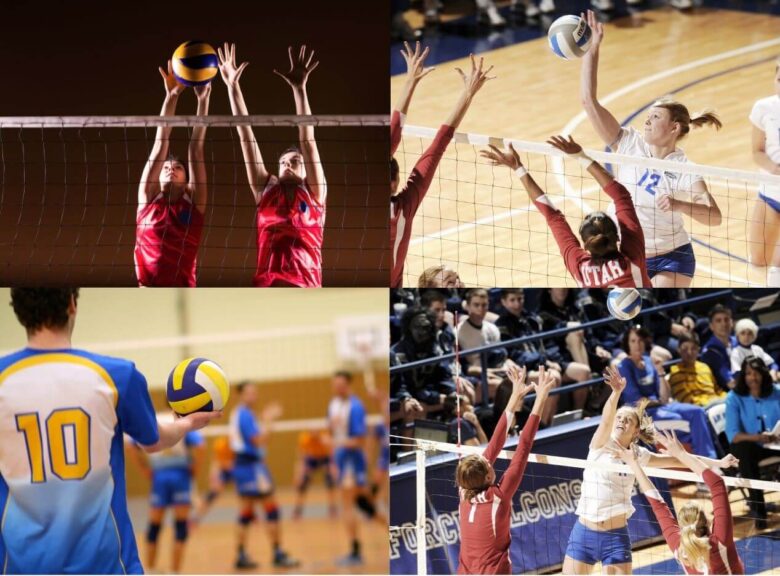The FIVB Volleyball Nations League (VNL) has quickly become one of the most prestigious and anticipated annual competitions in the international volleyball calendar. Since its debut in 2018, the VNL has redefined how national teams prepare, compete, and evolve on the global stage. With top nations competing in a round-robin format leading to dramatic finals, it serves not only as elite competition but also as a showcase of volleyball’s future.
In this comprehensive guide, we’ll break down everything you need to know about the VNL: its origins, format, key teams, how it compares to other major tournaments, and why it’s a must-watch for volleyball fans around the world.
What Is the Volleyball Nations League?
The VNL is an international tournament organized by the Fédération Internationale de Volleyball (FIVB). It features the best men’s and women’s national teams in the world and aims to increase the sport’s global popularity through a consistent, high-profile competition that occurs annually.
Origins and Evolution:
- Launched: 2018, replacing the previous World League (men) and World Grand Prix (women)
- Objective: Increase global engagement, improve broadcast value, and create consistent yearly competition
- Broadcast Reach: Over 130 countries
The VNL is unique in that it blends elite competition with entertainment, attracting new audiences while delivering high-stakes matches for seasoned fans.
How the VNL Works: Format and Rules
Each year, the VNL features 16 national teams per gender (16 men’s and 16 women’s). These teams compete in a pool-play format over several weeks, leading to a final round featuring the top-ranked teams.
Tournament Structure:
- Preliminary Round:
- 16 teams divided into rotating pools each week
- Each team plays 12 matches over 3 weeks
- Final Round:
- Top 8 teams qualify (based on round-robin results)
- Single-elimination format: quarterfinals, semifinals, bronze, and gold medal matches
Key Rules:
- Rally point scoring to 25 (best-of-five format)
- Tie-breakers decided by set ratio and point ratio
- Video challenge system used extensively
Each team must manage their roster across a grueling travel and competition schedule, testing depth, fitness, and adaptability.
The Importance of the VNL for National Teams
While the Olympics and World Championships remain the pinnacle of volleyball, the VNL plays a crucial role in:
- Testing Roster Depth: Coaches rotate players to prepare for major tournaments
- Gaining International Experience: Younger players earn caps against the best
- World Ranking Points: Results directly impact FIVB world rankings
- Scouting and Analytics: Teams gather data on their own performance and competitors
Top teams use the VNL as both preparation and statement. It’s where future Olympic champions often emerge.
Host Countries and Global Rotation
One of the VNL’s innovations is its rotating host system. Instead of one centralized location, each week’s matches take place in different cities across the globe.
Benefits of Rotating Venues:
- Global exposure and local fan engagement
- Revenue generation for national federations
- Promotes volleyball in developing markets
Some of the most successful host nations include Italy, Japan, Brazil, Poland, and the United States — all with massive home crowds and strong volleyball cultures.
Dominant Teams and VNL Champions
Since its inception, several national teams have asserted dominance in the VNL.
Women’s Tournament – Past Champions:
- USA: 2018, 2019, 2021 (undisputed early leaders)
- Italy: 2022 (featuring young star Paola Egonu)
- Turkey: 2023 (defeated China in the final)
Men’s Tournament – Past Champions:
- Russia: 2018, 2019
- Brazil: 2021 (return to form)
- France: 2022 (momentum from Olympic gold)
- Poland: 2023 (tactical, deep roster)
These results reveal shifting power dynamics in international volleyball, with emerging teams challenging traditional giants.
Players to Watch in the VNL
The VNL is a showcase for current stars and rising talents.
Women’s Standouts:
- Paola Egonu (Italy): Power and precision at the net
- Melissa Vargas (Turkey): Game-changing spiker
- Jordyn Poulter (USA): Elite setting and leadership
- Zhu Ting (China): Returning icon after injury
Men’s Standouts:
- Wilfredo León (Poland): Explosive attacker
- Yoandy Leal (Brazil): Versatile and experienced
- Earvin N’Gapeth (France): Charismatic playmaker
- Micah Christenson (USA): World-class setter
These athletes bring individual brilliance that elevates the entire tournament.
Tactical Trends Emerging from the VNL
Because the VNL features frequent, high-level matches, it serves as a laboratory for evolving strategies:
Current Trends:
- Faster offenses using quick middle attacks and pipe sets
- Hybrid setters with strong blocking and offensive ability
- Aggressive service pressure to disrupt opponent rhythm
- Libero specialization, focusing either on serve receive or defense
The result is a faster, more unpredictable game that rewards adaptability and creativity.
Why the VNL Matters for Fans
The VNL delivers some of the most exciting and accessible volleyball each year.
Fan Benefits:
- Predictable schedule: Annual and consistent
- Online streaming: Matches available on Volleyball World TV
- Behind-the-scenes content: Social media, training clips, mic’d players
- High drama: Upsets, comebacks, and intense rivalries
It’s the ideal entry point for new fans and a feast for lifelong enthusiasts.
The VNL and Olympic Qualification
Although not a direct Olympic qualifier, the VNL significantly influences Olympic preparation and team rankings.
- Form Guide: Coaches assess who is peaking at the right time
- Ranking Impact: Determines seeding for Olympic qualifying tournaments
- Team Chemistry: Long season helps develop on-court trust
Winning the VNL can be a psychological advantage heading into Olympic years.
Future of the VNL
FIVB continues to refine and grow the tournament.
Innovations on the Horizon:
- Expanded prize pools and financial incentives
- Enhanced fan interactivity (AR, live voting)
- Potential new host cities in Africa and the Middle East
With constant feedback from players, coaches, and fans, the VNL is shaping the future of the sport.
Final Thoughts
The Volleyball Nations League has redefined international volleyball by offering consistent, elite-level competition in an engaging and modern format. With its mix of tradition, innovation, and drama, the VNL isn’t just another tournament — it’s a proving ground for the sport’s best and brightest.
Whether you’re a coach analyzing formations, a fan cheering for your country, or a player dreaming of international glory, the VNL delivers unmatched access to the highest level of the game.
Keep your eyes on the schedule, follow your favorite teams, and enjoy what is fast becoming the heartbeat of global volleyball.



